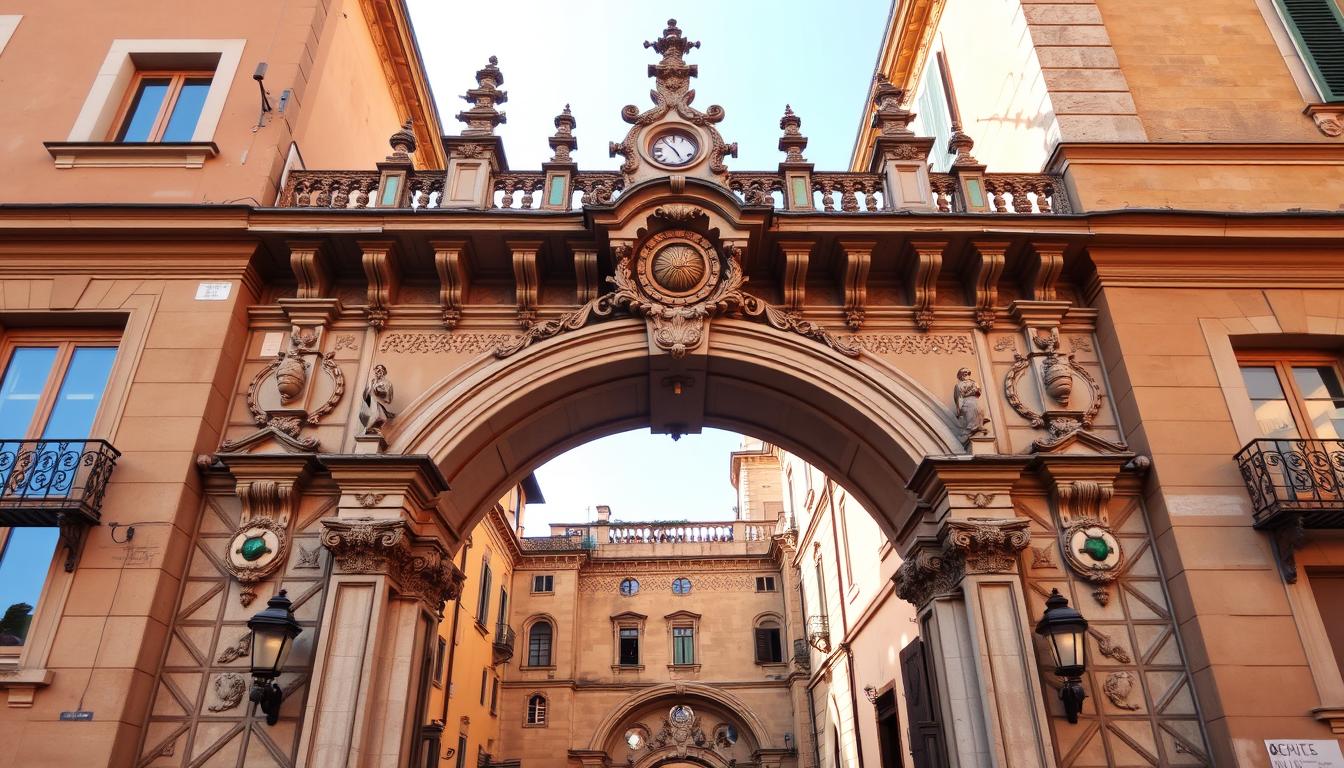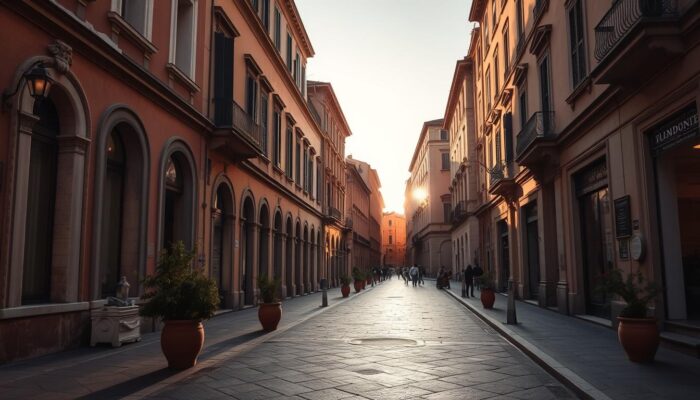Map of Rome’s Secret Spots
Before we dive into the details, here’s a map showing all the secret spots we’ll explore in this guide. Save it to your phone to easily navigate between these hidden gems during your visit.
1. Quartiere Coppedè: Rome’s Fairytale District
Tucked away in Rome’s Trieste neighborhood lies one of the city’s most enchanting secret spots—Quartiere Coppedè. This tiny district feels like stepping into a fairytale, with its whimsical architecture blending Art Nouveau, Baroque, Medieval, and Ancient Greek influences. Created by architect Gino Coppedè between 1913 and 1927, this hidden gem consists of just a few blocks but packs an architectural punch that will leave you spellbound.
The best entrance is at the corner of Via Tagliamento and Via Dora, where you’ll pass under a magnificent arch supported by columns and adorned with an elaborate wrought-iron chandelier. Once inside, you’ll discover the Piazza Mincio with its stunning Fountain of the Frogs, surrounded by buildings that seem plucked from a fantasy novel.
Why It’s Special
Quartiere Coppedè stands in stark contrast to Rome’s ancient ruins and Renaissance architecture. Its dreamlike quality has made it a favorite filming location, appearing in classic Italian horror films and even inspiring some of Wes Anderson’s aesthetic. Yet despite its uniqueness, most tourists never hear about this architectural wonderland.
Travel Tip
Visit in the early morning when the light is soft and the district is quiet. The area is residential, so respect the locals by keeping noise to a minimum. The nearest metro stop is Sant’Agnese/Annibaliano on Line B1, followed by a 10-minute walk.
Explore Rome’s Hidden Neighborhoods
Discover Quartiere Coppedè and other secret districts with a knowledgeable local guide who can reveal the stories behind these architectural treasures.
2. Aventine Hill: Secret Gardens and the Famous Keyhole
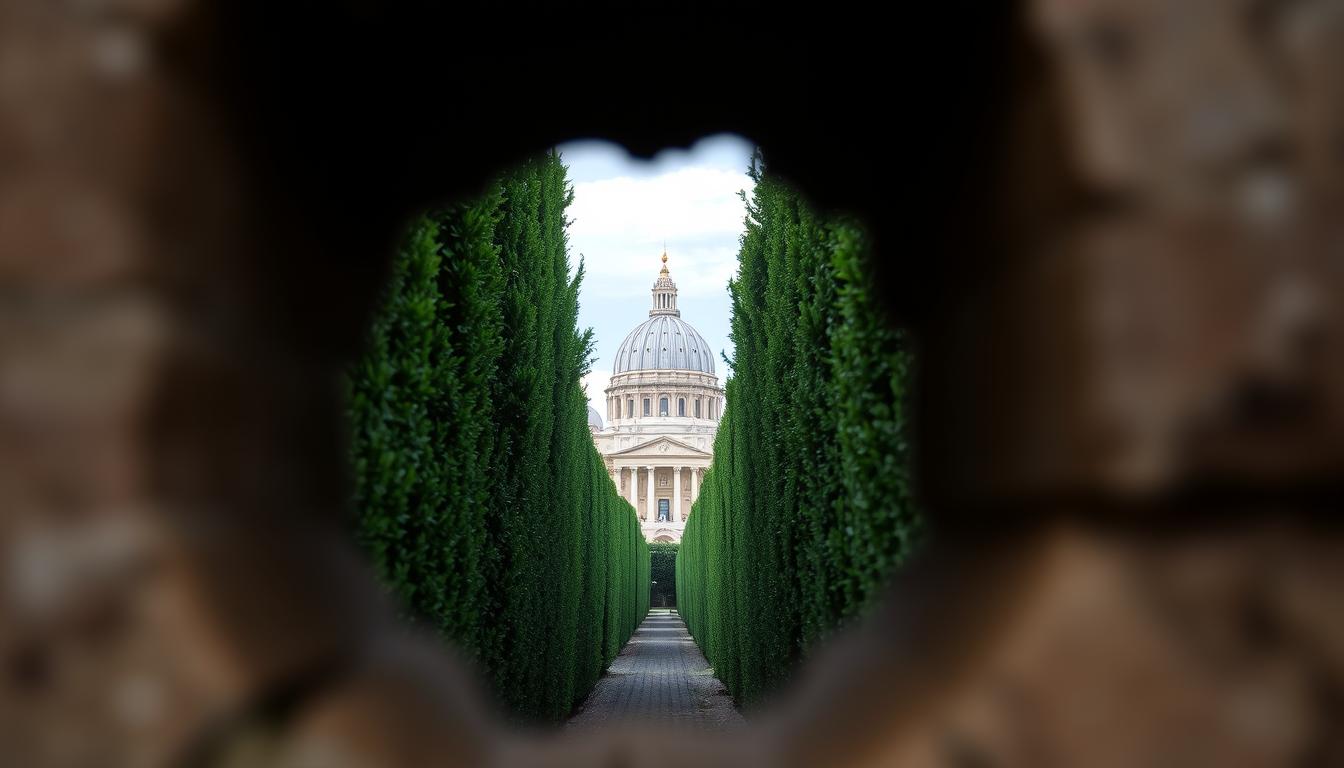
Aventine Hill offers a peaceful escape from Rome’s bustling streets and houses several of Rome’s secret spots in one beautiful location. This elegant residential area is home to beautiful gardens, ancient churches, and perhaps the city’s most famous “secret” view—the Knights of Malta Keyhole.
The Knights of Malta Keyhole
On Piazza dei Cavalieri di Malta stands an unassuming green door belonging to the Priory of the Knights of Malta. Peek through its keyhole, and you’ll be rewarded with a perfectly framed view of St. Peter’s Basilica dome in the distance—a view that spans three sovereign territories: the property of the Knights of Malta (a sovereign entity), Italy, and Vatican City. This optical illusion is one of Rome’s most magical hidden gems.
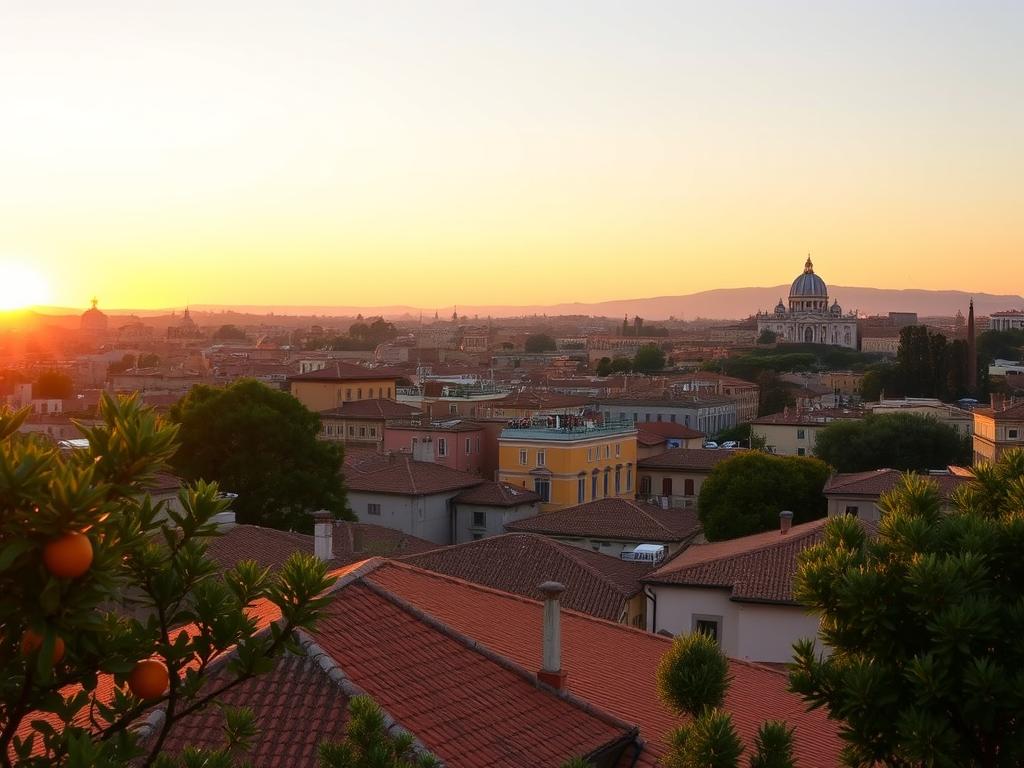
Giardino degli Aranci (Orange Garden)
Just a short walk from the keyhole is the Orange Garden (Giardino degli Aranci), one of Rome’s most romantic spots. This elegant garden offers breathtaking panoramic views of the city, with St. Peter’s Basilica dominating the skyline. The garden takes its name from the bitter orange trees that fill the space with their sweet fragrance in spring.
Basilica of Santa Sabina
Don’t miss the 5th-century Basilica of Santa Sabina, one of Rome’s oldest and most beautiful churches. Its simple, harmonious interior features 24 Corinthian columns and original wooden doors with intricate carvings. The church’s peaceful atmosphere and historical significance make it well worth a visit.
Travel Tip
Visit the keyhole early in the morning or during weekdays to avoid lines. The Orange Garden is particularly magical at sunset when the city is bathed in golden light. The area is easily reached by bus (lines 81, 160, 628) or a short walk from Circo Massimo metro station.
3. Via Appia Antica: Ancient Rome’s Highway
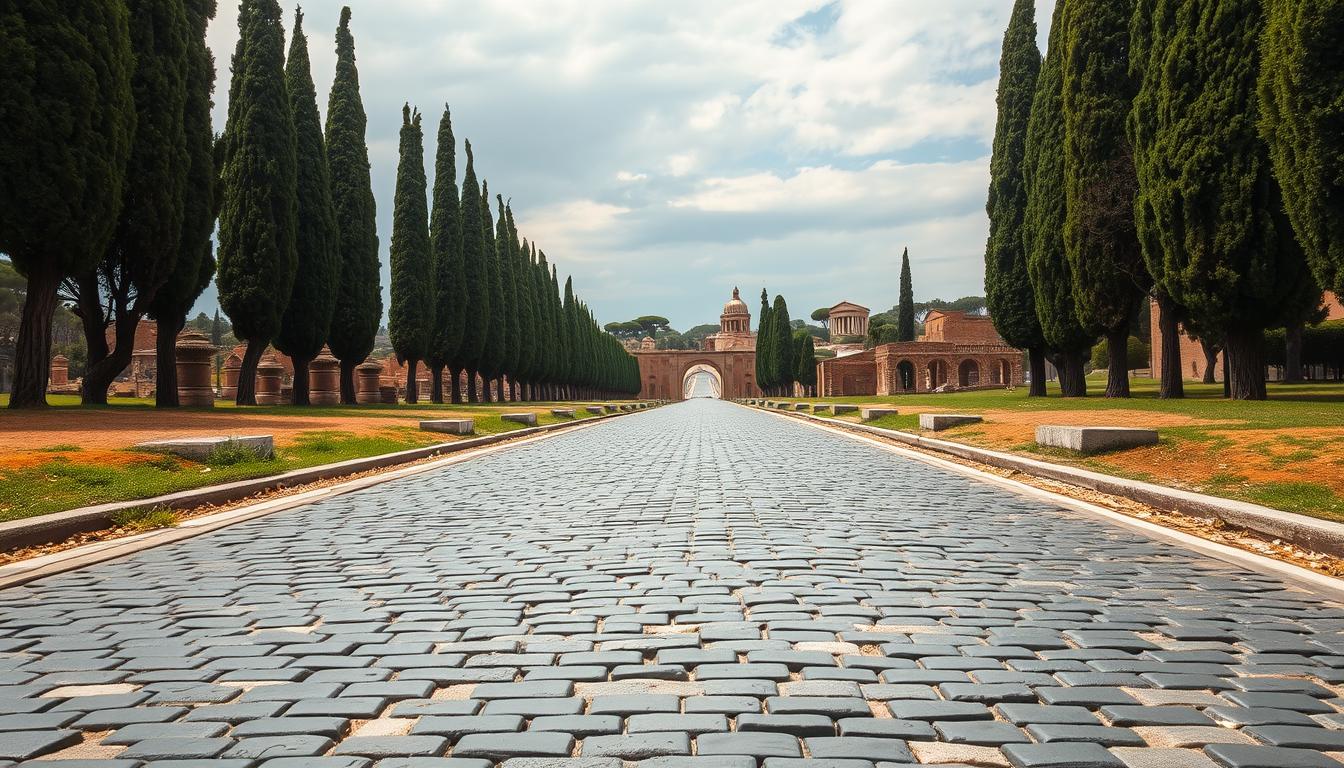
Just outside Rome’s city center lies one of antiquity’s greatest engineering marvels—the Appian Way (Via Appia Antica). Built in 312 BC, this was ancient Rome’s most important military and economic highway, stretching all the way to Brindisi in southern Italy. Today, it offers a remarkable escape from urban Rome into a landscape where ancient monuments rise among green fields and cypress trees.
Why It’s Special
Walking on the same massive basalt paving stones that Roman legions, merchants, and early Christians used over 2,000 years ago is a profound experience. Unlike the crowded forums and monuments in the city center, the Appian Way allows you to experience ancient Rome in a peaceful, almost meditative setting. The road is lined with impressive mausoleums, catacombs, and ruins of Roman villas.
What to See
- The Catacombs of San Callisto and San Sebastiano, where early Christians buried their dead
- The impressive Tomb of Cecilia Metella, a cylindrical mausoleum built in the 1st century BC
- The Villa of Maxentius complex with its circus and mausoleum
- The Church of Domine Quo Vadis, built where St. Peter allegedly met Jesus
Travel Tip
The best way to experience the Appian Way is by bicycle or e-bike. The road is closed to private traffic on Sundays, making it ideal for a weekend visit. Bring water, comfortable shoes, and sun protection as there’s limited shade. To get there, take bus 118 from Circo Massimo metro station or join an organized tour.
Explore the Ancient Appian Way
Discover the ancient highway and hidden catacombs on a guided e-bike tour that takes you through Rome’s beautiful countryside.
4. Trastevere’s Hidden Corners
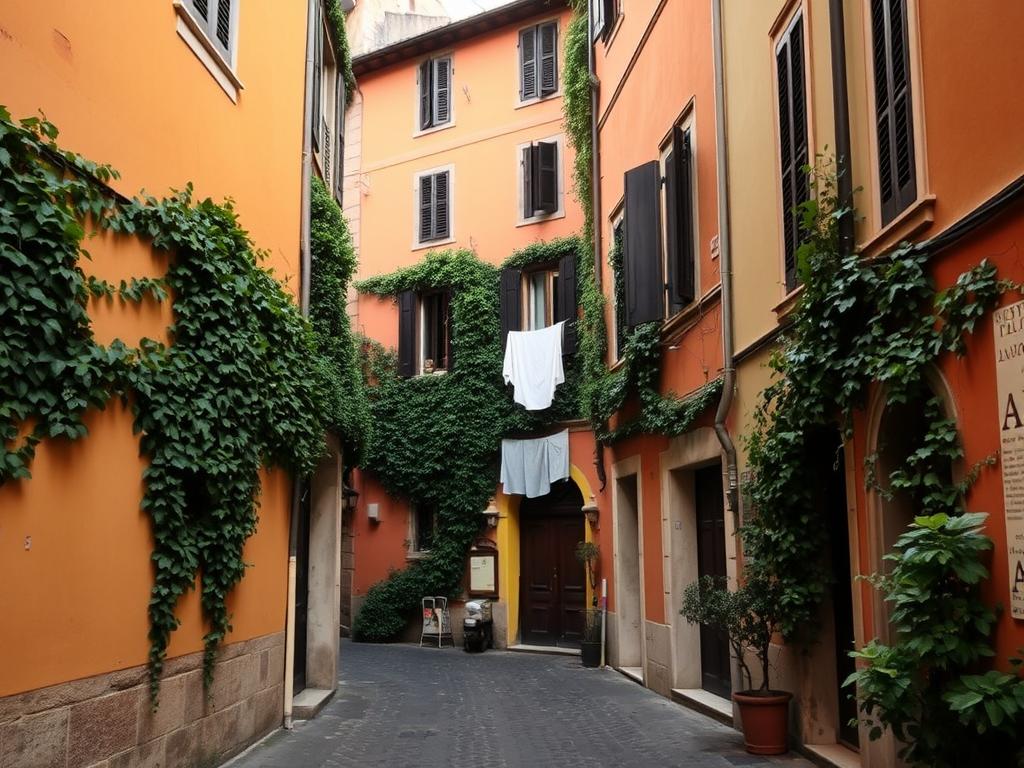
While Trastevere has gained popularity in recent years, most visitors stick to its main squares and restaurant-lined streets. Venture just a few blocks away from Piazza di Santa Maria in Trastevere, and you’ll discover the authentic heart of this charming neighborhood—one of Rome’s secret spots hiding in plain sight.
Beyond the Main Square
The real magic of Trastevere lies in its quiet residential streets where locals still hang laundry between buildings, elderly residents chat on doorsteps, and neighborhood cats nap in sunny corners. Wander the maze of narrow lanes around Via della Scala, Via dei Salumi, and Via dell’Arco di San Callisto to experience the Rome of decades past.
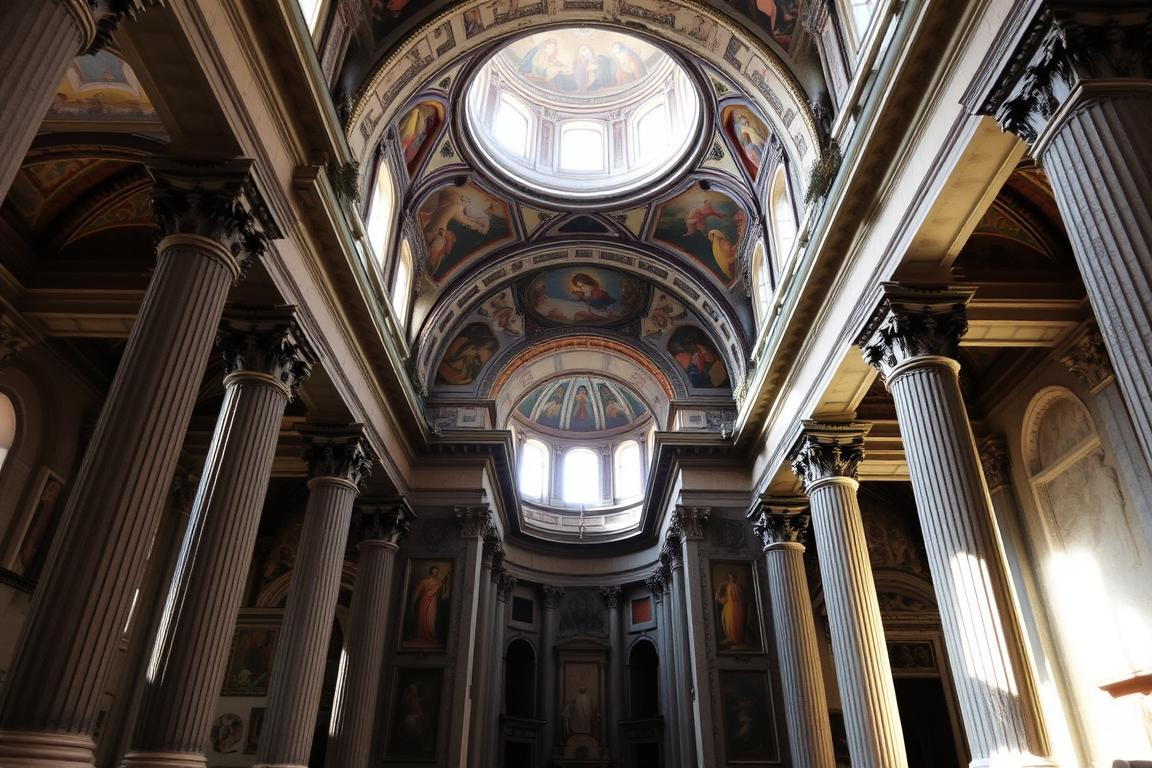
Santa Cecilia in Trastevere
While tourists flock to Santa Maria in Trastevere, the nearby Basilica of Santa Cecilia remains relatively unknown. This 5th-century church is dedicated to the patron saint of music and houses a hauntingly beautiful sculpture of St. Cecilia by Stefano Maderno. Don’t miss the chance to visit the underground excavations revealing ancient Roman homes.
Botanical Garden
Tucked away in Trastevere is Rome’s Botanical Garden (Orto Botanico), a 12-hectare oasis of tranquility housing over 3,000 plant species. Its Japanese garden, bamboo grove, and Mediterranean sections offer a refreshing escape from the city’s heat and crowds.
Travel Tip
Visit Trastevere early in the morning to see locals going about their daily routines before the tourist crowds arrive. For an authentic food experience, head to the small market at Piazza di San Cosimato, where locals shop for fresh produce. The best way to reach Trastevere is by tram (line 8) or bus (H line).
Taste Authentic Roman Cuisine
Discover Trastevere’s culinary secrets with a local food expert who’ll take you to family-run establishments serving traditional Roman dishes.
5. Underground Rome: Layers of History
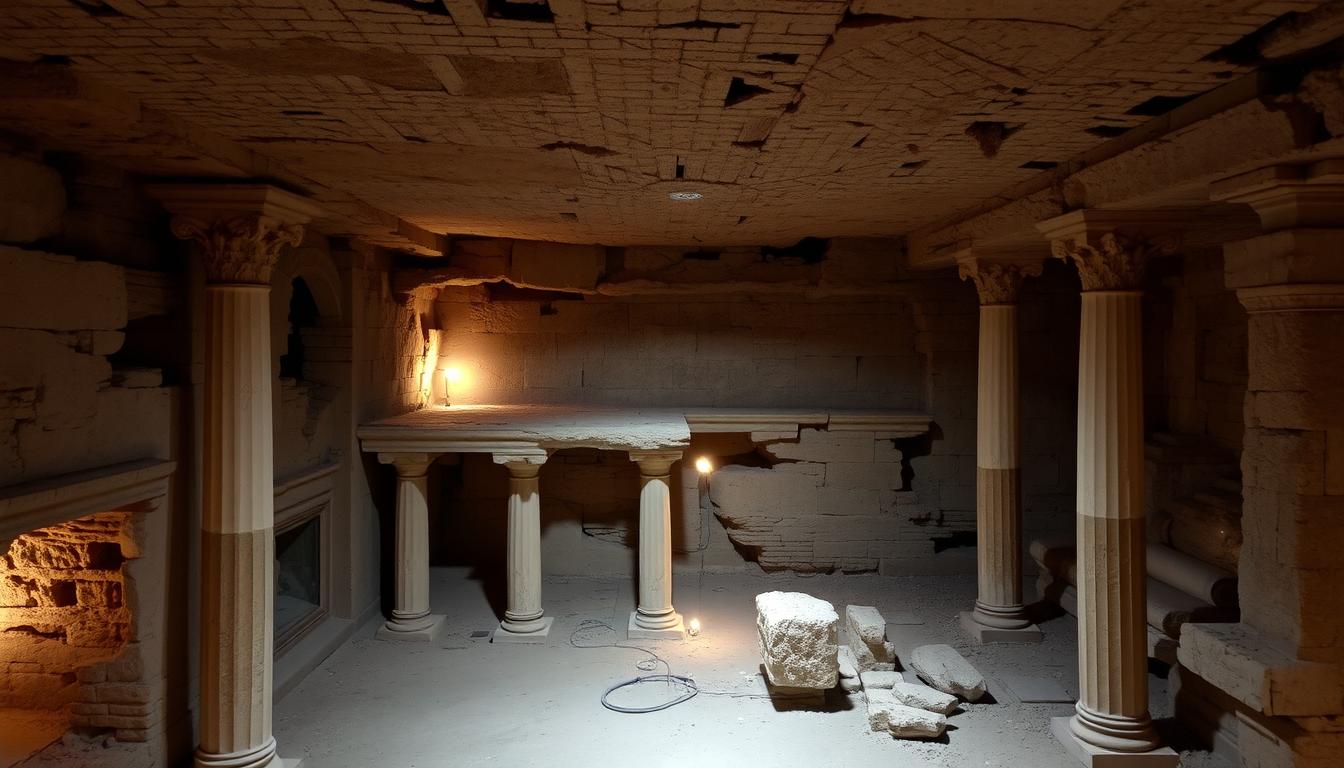
Beneath Rome’s bustling streets lies a hidden world spanning thousands of years of history. The city is built upon itself, with each generation constructing atop the ruins of the last. Exploring underground Rome reveals some of the city’s most fascinating secret spots—places where you can literally descend through time.
Basilica of San Clemente
This remarkable church near the Colosseum offers a journey through three distinct layers of Roman history. The current 12th-century church sits atop a 4th-century basilica, which itself was built over a 1st-century Roman house and Mithraeum (temple dedicated to the god Mithras). Descending through the levels feels like traveling back in time, with each floor revealing a different era of Rome’s past.

Capuchin Crypt
On the elegant Via Veneto lies one of Rome’s most macabre secret spots—the Capuchin Crypt. This small space contains the remains of nearly 4,000 Capuchin friars arranged in elaborate decorative patterns. Six tiny chapels feature bone chandeliers, skeletal clock faces, and niches filled with robed skeletons. Far from being gruesome, the site is a profound meditation on mortality, with a plaque reminding visitors: “What you are now, we once were; what we are now, you shall be.”
Case Romane del Celio
Hidden beneath the Basilica of Saints John and Paul on the Caelian Hill are the remarkably preserved remains of several Roman houses dating from the 2nd to 4th centuries AD. The site features stunning frescoes, mosaics, and a fascinating glimpse into daily life in ancient Rome. Despite its archaeological significance, this underground treasure remains largely unknown to tourists.
Travel Tip
Most underground sites have limited opening hours and may require advance booking. Bring a light jacket as these spaces remain cool even in summer. Photography is often restricted, so check the rules before visiting. For San Clemente, the entrance to the underground levels requires a separate ticket from the main church.
Discover Rome’s Underground Secrets
Explore crypts, catacombs, and ancient underground structures with expert guides who bring Rome’s hidden history to life.
6. Galleria Doria Pamphilj: A Private Palace Museum
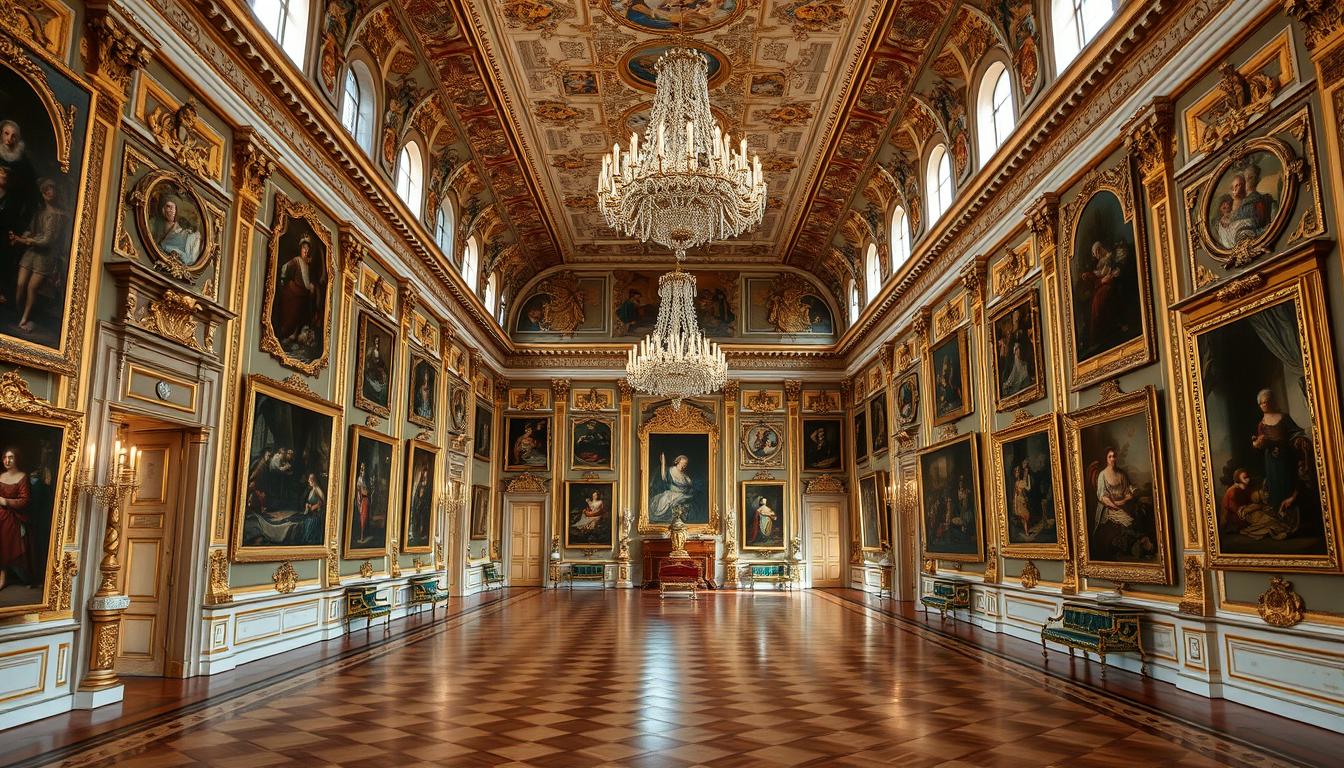
While tourists queue for the Vatican Museums, savvy travelers head to the Galleria Doria Pamphilj, one of Rome’s secret spots hiding behind an unassuming facade near the Pantheon. This stunning private palace remains the residence of the Doria Pamphilj family while housing one of Italy’s most impressive private art collections.
Why It’s Special
Unlike many museums, the Galleria Doria Pamphilj presents its masterpieces in their original setting—a lavishly decorated noble residence. The family’s collection includes works by Caravaggio, Raphael, Titian, and Velázquez (including his famous portrait of Pope Innocent X). The Gallery of Mirrors, modeled after Versailles, offers a glimpse into the opulent lifestyle of Rome’s aristocracy.
What makes this palace truly special is how it feels frozen in time. The current generation of the family still lives in a section of the palace, making this a living museum rather than just a historical artifact.
Travel Tip
The included audio guide is narrated by Prince Jonathan Doria Pamphilj himself, offering personal insights into his family’s history and collection. Visit on weekday mornings to have the galleries almost to yourself. The palace is located on Via del Corso 305, easily walkable from the Pantheon or Piazza Venezia.
More of Rome’s Secret Spots Worth Discovering

Pyramid of Cestius
This 36-meter-high pyramid was built around 12 BC as a tomb for magistrate Gaius Cestius. Located near the Porta San Paolo, this Egyptian-inspired monument stands as one of Rome’s most unusual ancient structures. Visit the nearby Non-Catholic Cemetery where poets Keats and Shelley are buried.
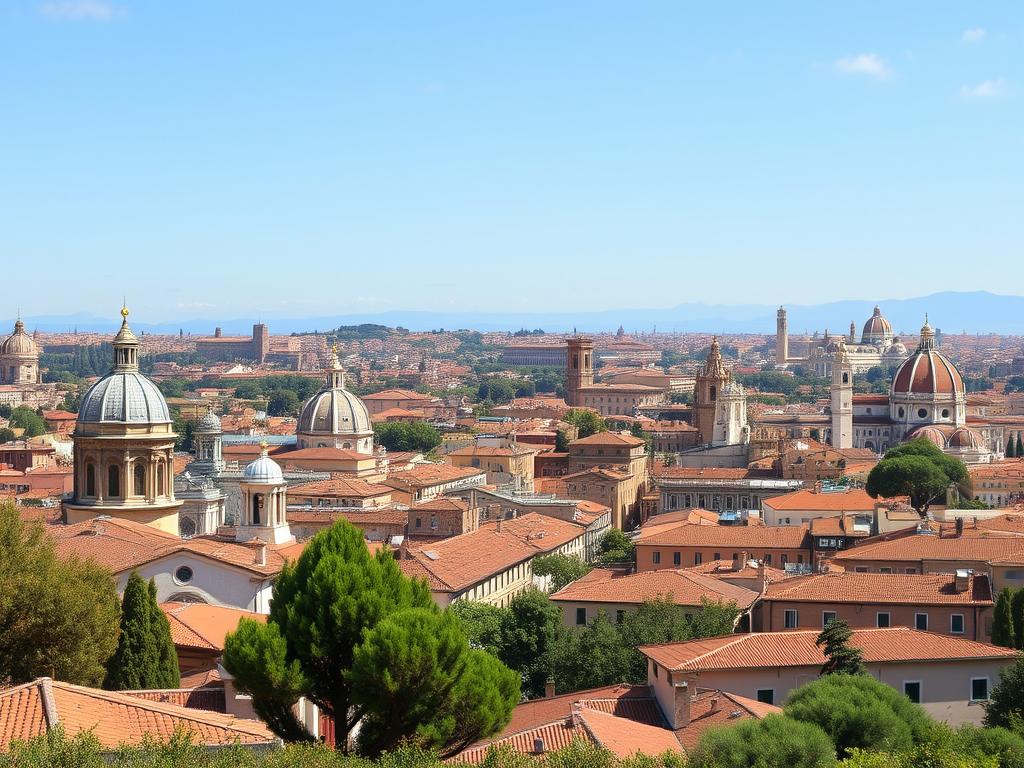
Janiculum Hill (Gianicolo)
For Rome’s best panoramic view, head to Janiculum Hill west of Trastevere. This peaceful park offers a breathtaking vista of the entire city. Visit at noon to witness the daily cannon firing, a tradition since 1847. The hill is also home to the beautiful Acqua Paola Fountain.
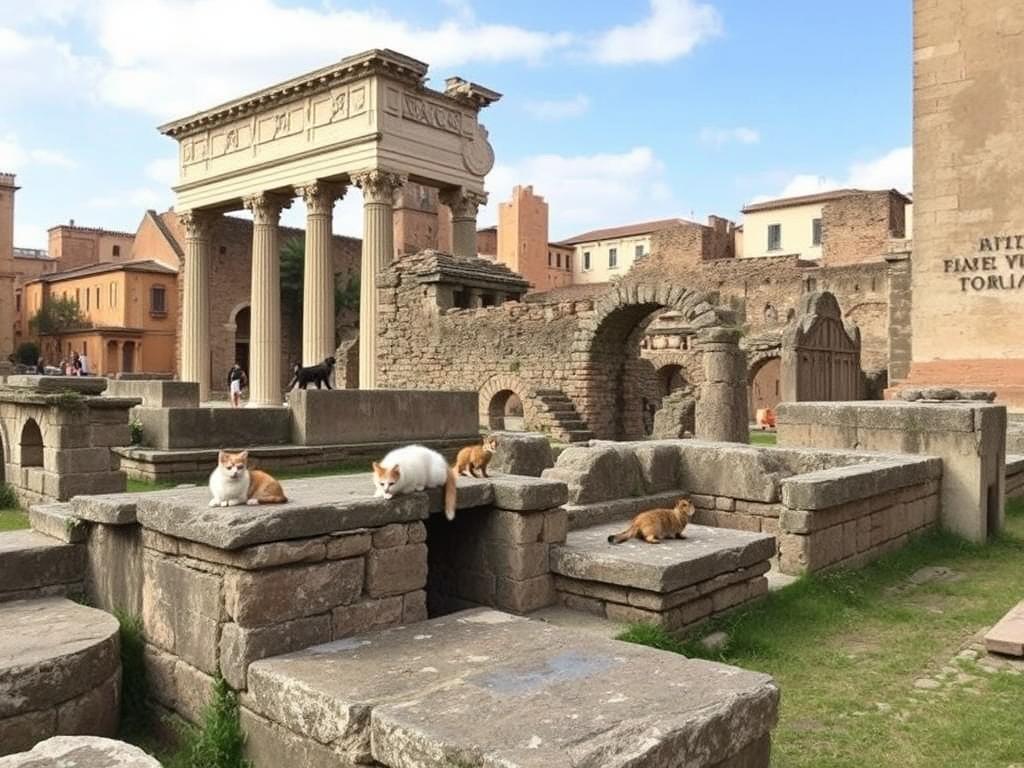
Largo di Torre Argentina Cat Sanctuary
This archaeological site where Julius Caesar was assassinated is now home to a colony of protected cats. Visit the volunteer-run sanctuary to meet some of Rome’s feline residents and see the ancient temples from a different perspective.
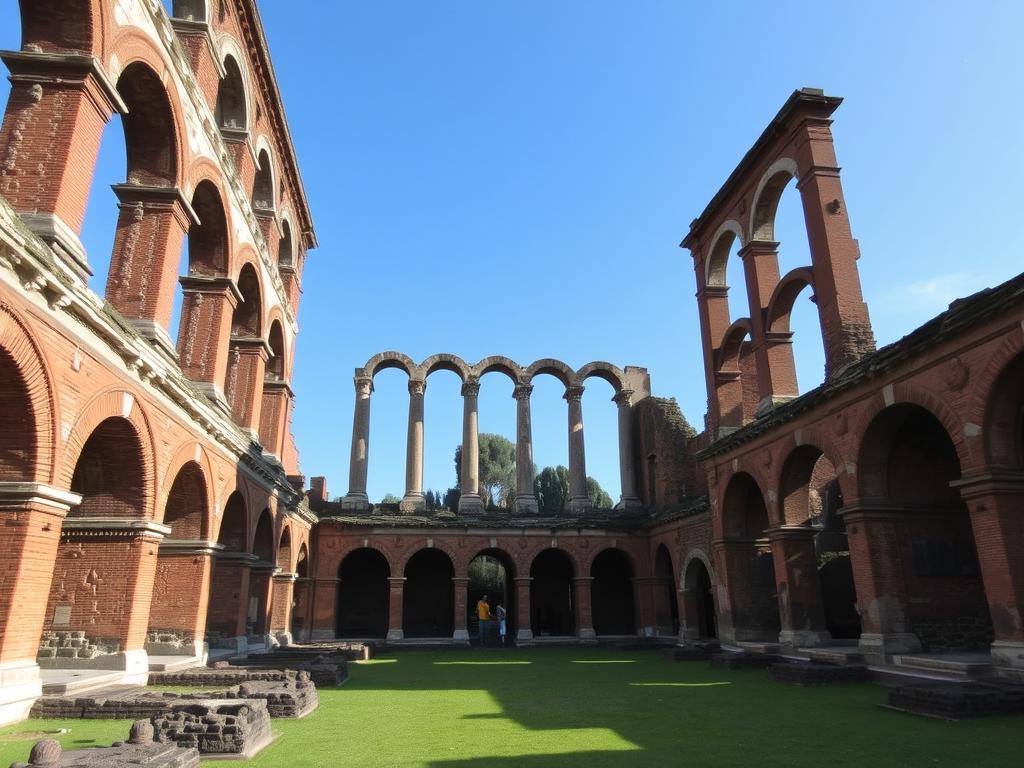
Terme di Caracalla
These massive ancient baths are among Rome’s most impressive ruins yet receive far fewer visitors than the Colosseum. The scale of these thermal baths, built between 212-216 AD, is awe-inspiring. Use the virtual reality guide to see how the complex looked in its heyday.
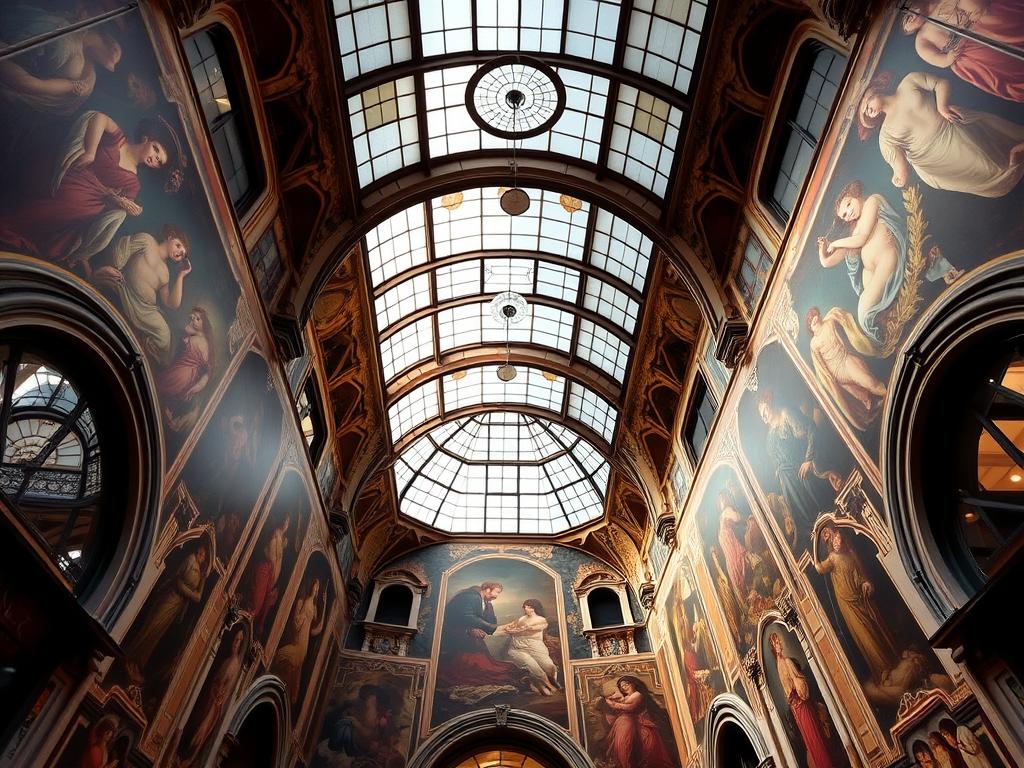
Galleria Sciarra
Just steps from the crowded Trevi Fountain lies this hidden Art Nouveau courtyard. Built in the late 19th century, its walls are covered with stunning frescoes celebrating women’s virtues. This secret spot is open during office hours as it’s part of a working building.
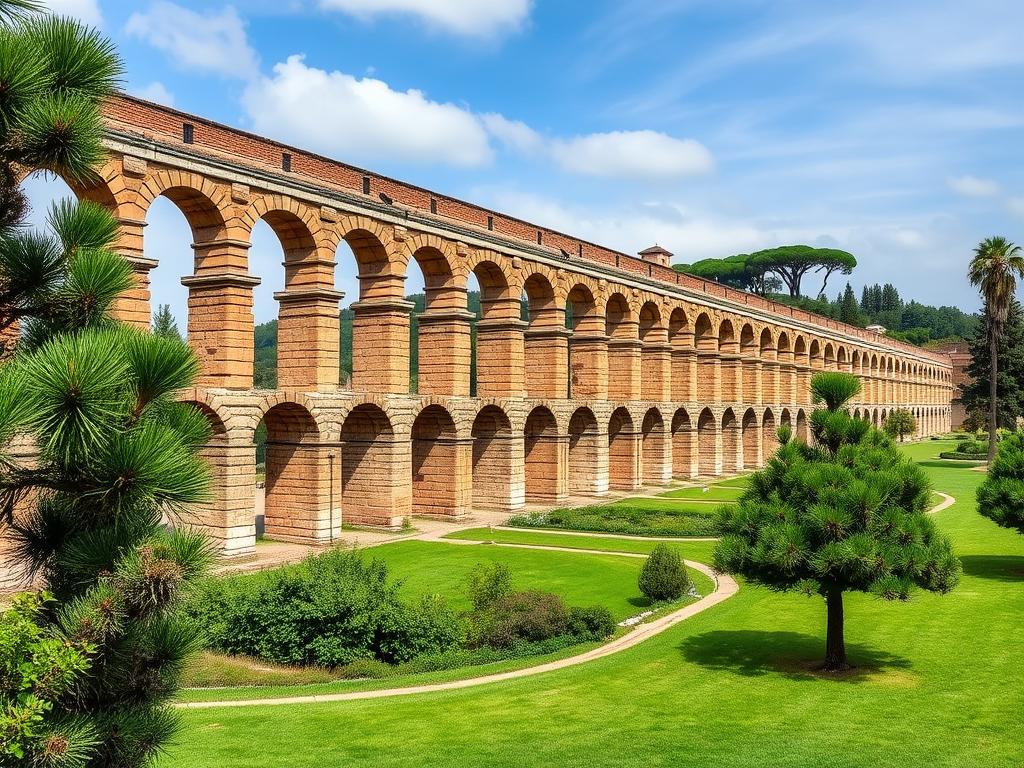
Park of the Aqueducts
This beautiful park in southeast Rome features the remains of several ancient Roman aqueducts. The sight of these massive structures cutting across the green landscape makes for stunning photos, especially at sunset. Reach it via Metro Line A to Giulio Agricola station.
Secret Food Experiences in Rome
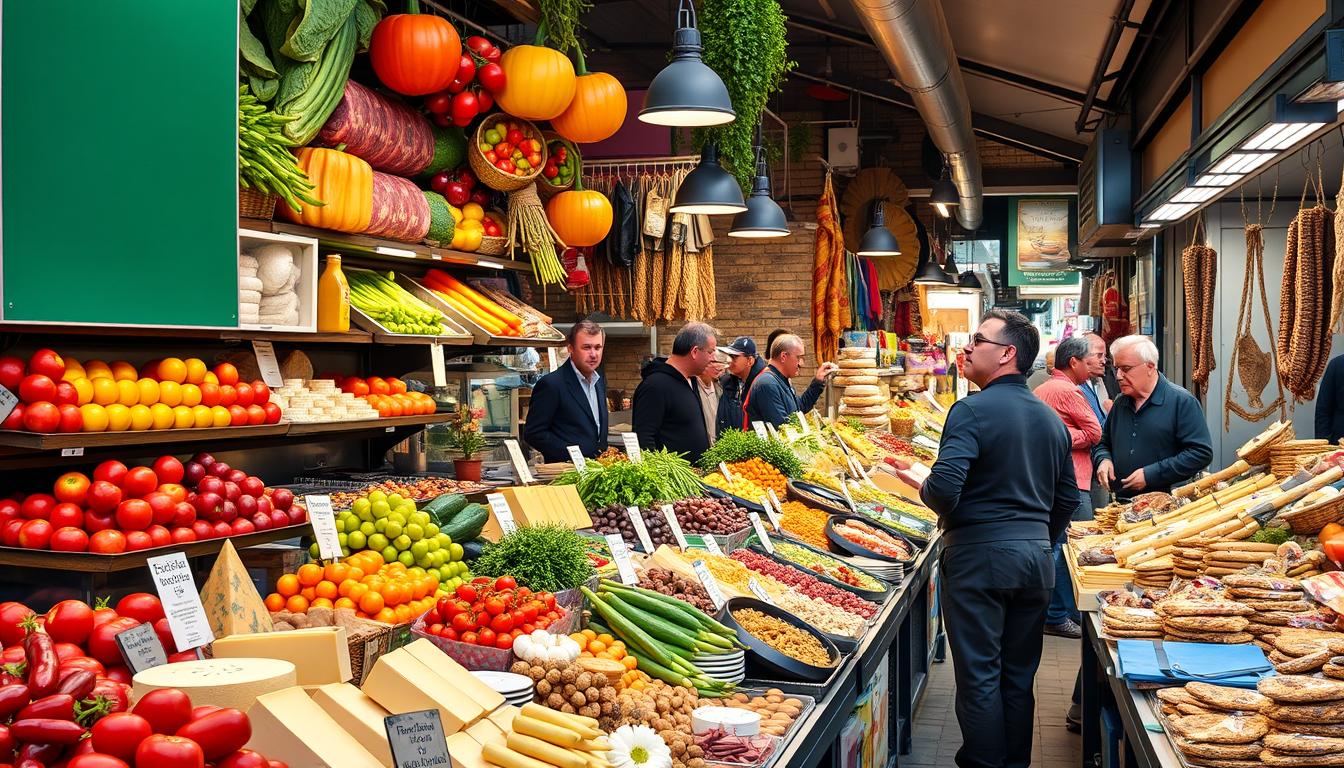
No exploration of Rome’s secret spots would be complete without discovering its hidden culinary treasures. While tourists line up at restaurants near major attractions, locals enjoy authentic Roman cuisine in neighborhoods rarely featured in guidebooks.
Testaccio Market
The Testaccio district is Rome’s true food lover’s paradise. Its covered market houses dozens of stalls selling fresh produce and prepared foods. Don’t miss Mordi e Vai for traditional Roman sandwiches filled with slow-cooked meats, or the pizza al taglio (by the slice) at Casa Manco. The market offers an authentic glimpse into everyday Roman life and cuisine.
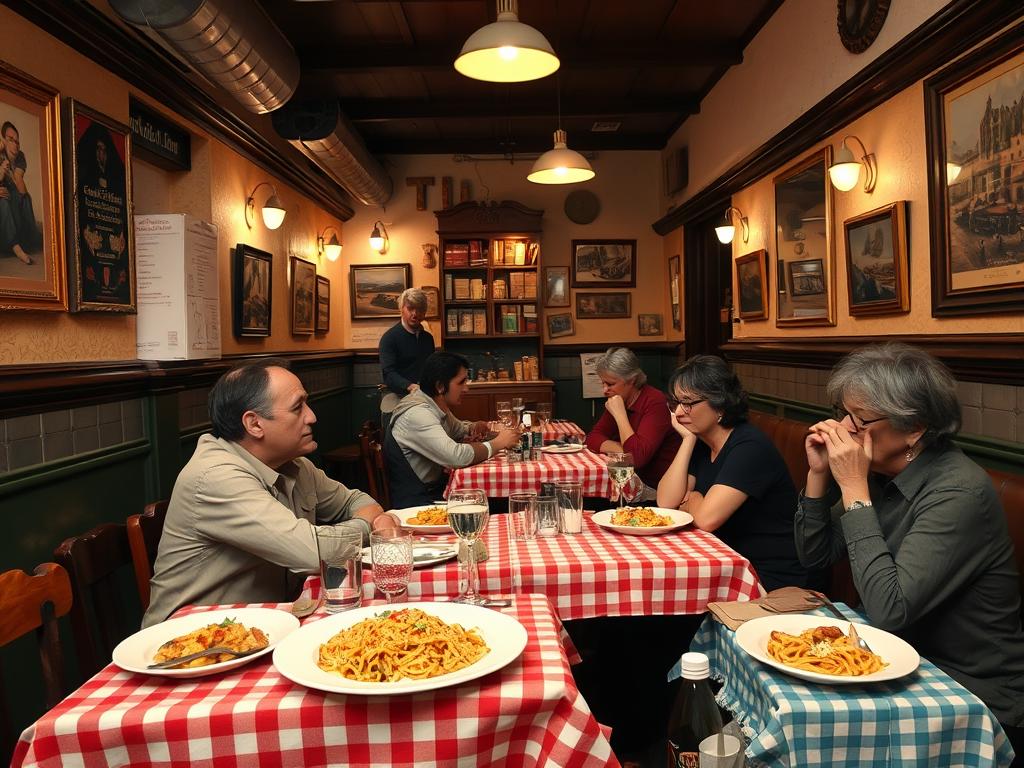
Neighborhood Trattorias
For authentic Roman cuisine, head to residential neighborhoods like Monteverde, Pigneto, or San Lorenzo. Look for small, family-run trattorias with handwritten menus and tables filled with locals. These establishments serve traditional dishes like cacio e pepe, carbonara, and trippa alla romana (tripe in tomato sauce) the way Romans have enjoyed them for generations.
Wine Bars in Monti
The trendy Monti district near the Colosseum is home to some of Rome’s best wine bars (enotecas). Places like Al Vino Al Vino and La Barrique offer extensive selections of Italian wines by the glass alongside platters of local cheeses and cured meats. These cozy establishments provide a perfect setting to experience Rome’s wine culture like a local.
Travel Tip
Romans eat dinner late, usually after 8:30 PM. For the most authentic experience, follow their schedule. Always make reservations for dinner, especially on weekends. Avoid restaurants with “tourist menus” or staff trying to lure you in from the street—these are clear signs the place caters to tourists rather than locals.
Discover Rome’s Hidden Food Gems
Join a small-group food tour led by a local expert to discover authentic Roman cuisine in neighborhoods tourists rarely visit.
Tips for Finding Your Own Rome’s Secret Spots
While this guide highlights some of Rome’s best-kept secrets, part of the joy of visiting the Eternal City is discovering your own hidden gems. Here are some tips to help you uncover Rome’s secret spots during your visit:
Get Lost Intentionally
Some of Rome’s most magical moments happen when you put away the map and simply wander. Choose a neighborhood like Monti, Testaccio, or Prati and allow yourself to explore without a specific destination. Turn down quiet alleys, peek into courtyards, and follow your curiosity.
Rise Early
Rome transforms in the early morning hours before tourists flood the streets. Wake up at dawn to see locals setting up market stalls, delivery trucks supplying neighborhood bakeries, and cats reclaiming ancient ruins. Even famous sites feel like secret spots at 7 AM.
Talk to Locals
Romans are proud of their city and often eager to share their favorite places with appreciative visitors. Strike up conversations with shopkeepers, baristas, or your Airbnb host. A simple question like “Where do you like to eat?” can lead to wonderful discoveries.
Explore Beyond the Center
Rome’s public transportation system makes it easy to visit neighborhoods outside the historic center. Areas like Ostiense, Flaminio, and EUR offer fascinating architecture, excellent restaurants, and a glimpse of contemporary Roman life without the tourist crowds.
Follow the Locals
At aperitivo time (around 7 PM), watch where Romans gather for pre-dinner drinks and snacks. These neighborhood spots often offer the most authentic experiences. Similarly, follow locals to their favorite gelaterias—the ones without neon-bright displays and tourist-friendly signs.
Use Social Media Wisely
While Instagram can lead to overtourism, it can also help discover hidden gems. Follow Rome-based photographers, food bloggers, and local guides for insider tips. Just remember to keep some discoveries to yourself to preserve their secret charm.
From Rome to Paris: Discovering Hidden Gems
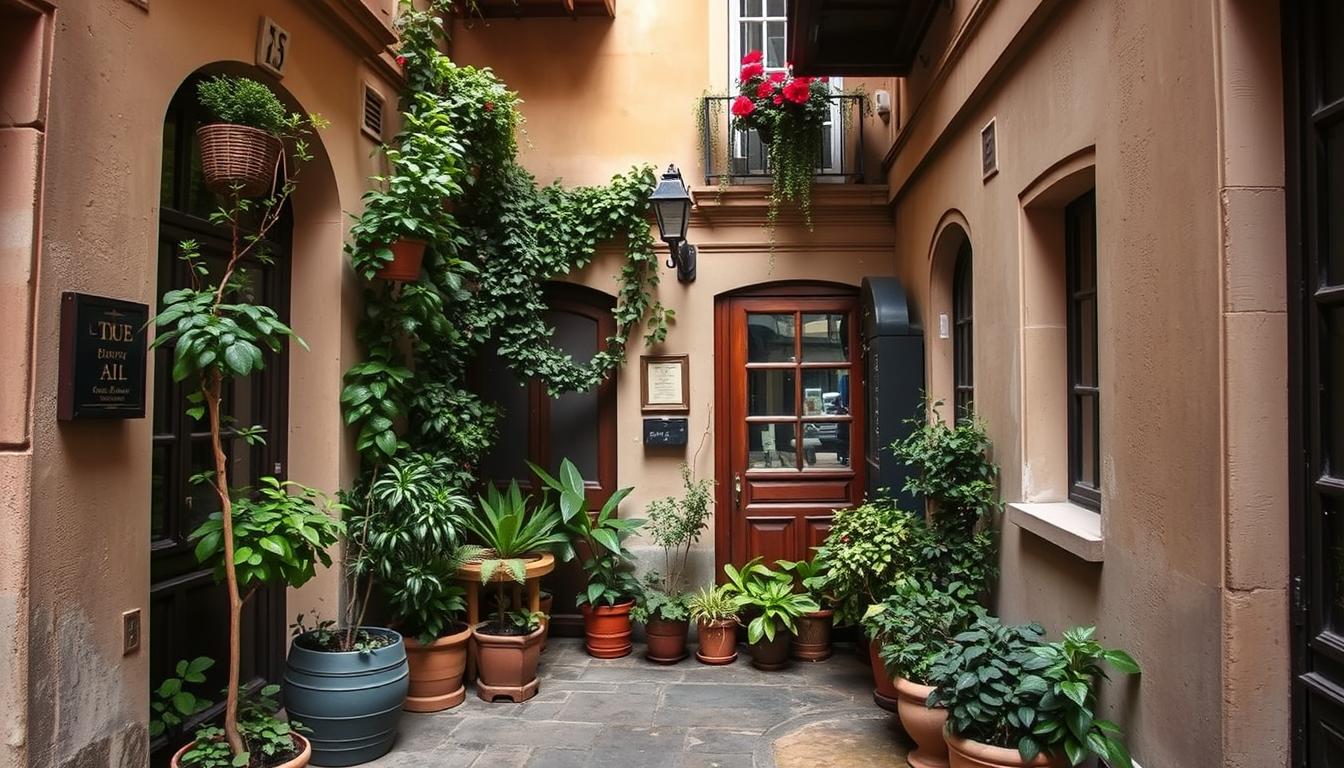
If you love discovering places like Rome’s secret spots, the thrill of finding hidden gems doesn’t have to end when you leave Italy. Paris, like Rome, rewards travelers who venture beyond the obvious landmarks. Behind the Eiffel Tower and Louvre lies a city of secret passages, hidden gardens, and neighborhood bistros where locals create their daily lives.
Just as Rome reveals its true character in places like Quartiere Coppedè and Aventine Hill, Paris unveils its authentic soul in the covered passages of the 2nd arrondissement, the hidden Coulée Verte elevated park, and the artistic squats of Belleville. If you love discovering places like Rome’s secret spots, check out our guide on How to Experience Paris Like a Local for your next European adventure.
7.Embracing the Secret Side of Rome
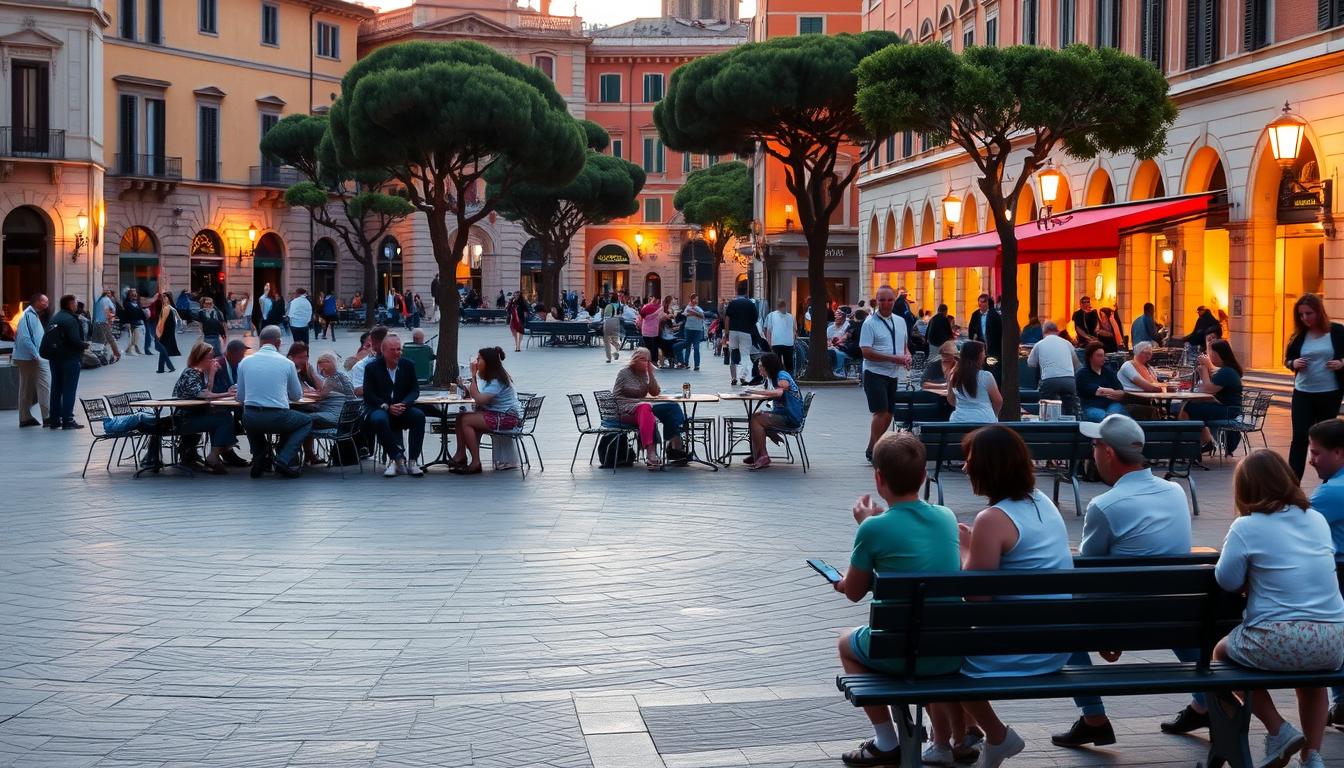
Rome’s secret spots offer more than just an escape from crowds—they provide a deeper connection to the Eternal City’s soul. In these hidden corners, you’ll find the authentic Rome that has endured for millennia, where daily life unfolds much as it has for generations. From the whimsical architecture of Quartiere Coppedè to the ancient stones of the Appian Way, these lesser-known gems reveal the many layers that make Rome so endlessly fascinating.
As you plan your visit, remember that the most memorable experiences often happen away from the must-see checklist. Allow yourself time to wander, to sit in neighborhood piazzas watching local life unfold, and to discover your own favorite secret spots. Rome rewards the curious traveler who looks beyond the obvious and seeks out the hidden treasures that make this city truly eternal.
By venturing beyond the Colosseum and uncovering Rome’s secret spots, you’ll return home with more than just snapshots of iconic landmarks—you’ll carry memories of quiet courtyards, hidden alleyways, and authentic Roman experiences that truly capture the spirit of la dolce vita.
If discovering the lesser-known side of Rome excites you, you might also enjoy exploring other cities through a local lens. Be sure to check out our guide on How to Experience Paris Like a Local for more insider tips on making your travels truly unforgettable.

